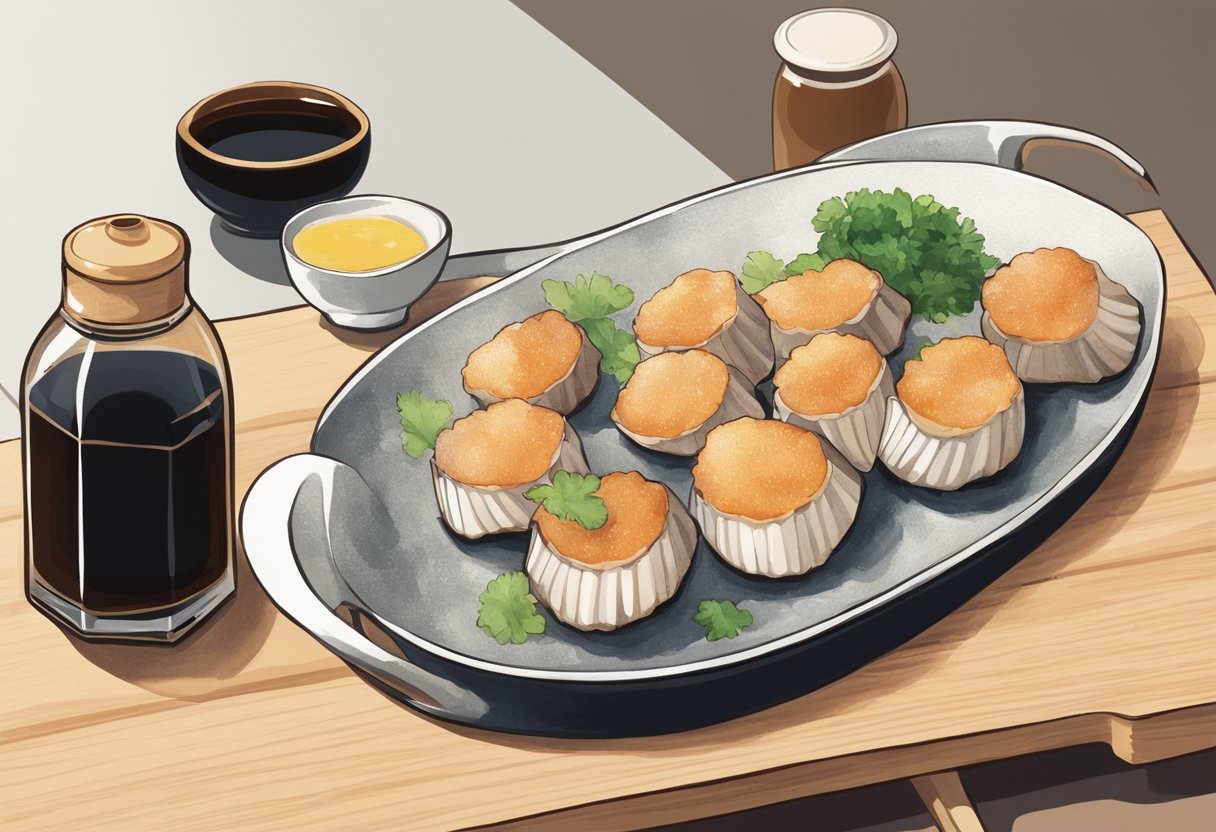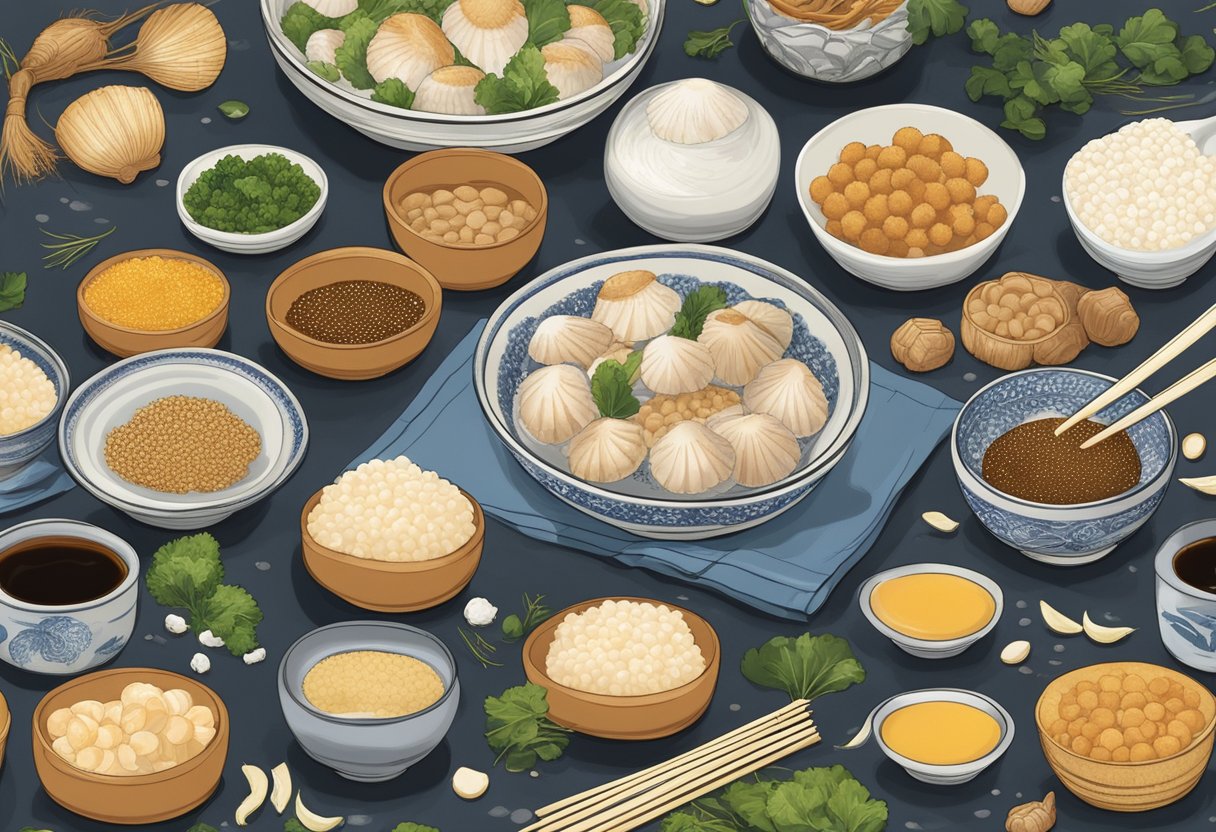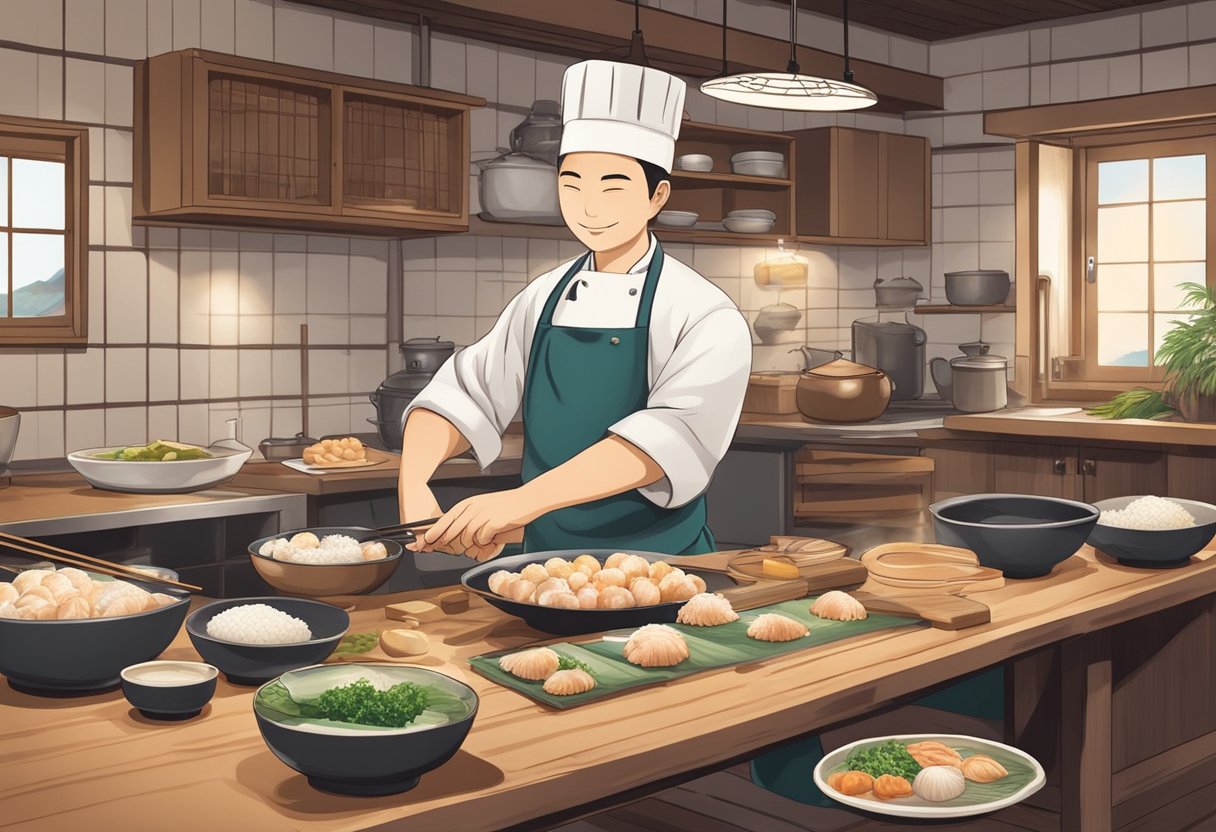If you're a seafood lover looking for a unique and delicious dish to try, look no further than the Japanese scallop recipe. This recipe is a mouth-watering culinary journey that brings the flavours of Japan to your table. The seared scallops, adorned with a savoury mayo sauce, offer a delightful taste of Japanese cuisine in just 10 minutes!

Japanese cuisine is known for its emphasis on fresh, high-quality ingredients and simple yet flavourful preparations. The Japanese scallop recipe is no exception. With just a few ingredients, you can create a dish that is both elegant and delicious. Whether you're a seasoned home cook or a beginner, this recipe is sure to impress your guests and satisfy your taste buds.
So, what are you waiting for? Try the Japanese scallop recipe today and experience the unique flavours of Japan in your own kitchen.
Japanese Scallop Recipe Basics

If you're a seafood lover, then you must try the Japanese Scallop recipe. The recipe is easy to follow and requires only a few ingredients to create a delicious dish. Here are some basics to get you started.
Selecting Scallops
When it comes to selecting scallops, you want to choose fresh, high-quality scallops. Hokkaido is known for its high-quality Japanese scallops, so if you can find them, they are a great choice. If fresh scallops are not available, frozen scallops can be used as a substitute. When selecting frozen scallops, make sure they are not freezer-burnt and have not been thawed and refrozen.
Preparation Techniques
Before cooking scallops, they need to be prepared. To start, rinse the scallops under cold water and pat them dry with a paper towel. If there is a muscle on the side of the scallop, remove it as it can be tough to eat. To store scallops, place them in an airtight container and keep them in the fridge until ready to use.
Cooking Methods
There are various ways to cook scallops, but the most popular method is pan-seared. To do this, heat a pan with some olive oil over medium-high heat. Season the scallops with salt and pepper and sear them for 2-3 minutes on each side until they are golden brown. Another popular way to cook scallops is to grill them. Brush the scallops with olive oil and season with salt, pepper, and togarashi. Grill them for 2-3 minutes on each side until they are cooked through.
Other Ingredients
Japanese cooking often includes umami-rich ingredients like miso, garlic, and soy sauce. You can add these ingredients to your scallop recipe to enhance the flavour. For example, you can create a miso butter sauce to drizzle over the scallops or add garlic to the pan while searing them. For a unique twist, try adding some yuzu-flavored tobiko on top of the scallops. If you want to pair your scallops with wine, white wine or rose are good options.
Now that you have a basic understanding of Japanese scallop recipe, you can start experimenting with different ingredients and cooking methods to create your own delicious seafood recipes.
Flavour Enhancements and Nutritional Information

Sauces and Garnishes
When it comes to Japanese scallop recipes, there are many ways to enhance the flavour of the dish. Butter, soy sauce, lemon, cream, parsley, and chives are all great options for adding flavour to scallops. You can also try making a mayo sauce or spicy mayo to add a little kick to your dish. A garnish of fresh herbs or a sprinkle of freshly ground black pepper can also add a nice touch.
Health Benefits and Dietary Considerations
Scallops are a great source of protein, low in calories and carbohydrates, and are a good source of nutrients such as vitamin A, vitamin C, and potassium. They are also low in fat and cholesterol, making them a great choice for those watching their saturated fat intake. However, be mindful of the sodium content in some sauces and seasonings, such as soy sauce, as it can add up quickly.
When it comes to sustainability, look for scallops that are labelled as sustainable and harvested in an environmentally friendly manner. As with any seafood, it's important to consider the impact on the environment and choose wisely.
In summary, Japanese scallops are a tasty and nutritious seafood option that can be enjoyed in a variety of ways. Experiment with different sauces and garnishes to find your favourite flavour combination, and be mindful of the sodium content in seasonings.
Frequently Asked Questions

What's the simplest way to prepare Japanese scallops at home?
One of the simplest ways to prepare Japanese scallops at home is to pan-sear them with butter and soy sauce. Heat a frying pan over medium-high heat, add a tablespoon of unsalted butter and let it melt. Then, add the scallops to the pan and sear one side until golden brown. Flip the scallops and sear the other side. Add soy sauce and cook for a minute or two more until the scallops are fully cooked.
How do you make authentic Japanese scallop sashimi?
To make authentic Japanese scallop sashimi, you'll need fresh, high-quality scallops. Slice the scallops into thin pieces and arrange them on a plate. Serve with soy sauce, wasabi, and pickled ginger.
What are some tasty Japanese-inspired snacks using scallops?
One tasty Japanese-inspired snack using scallops is scallop gyoza. Mix chopped scallops with cabbage, garlic, ginger, and soy sauce. Fill gyoza wrappers with the mixture and pan-fry until crispy. Serve with soy sauce and chili oil for dipping.
Where can I purchase quality Japanese scallops for cooking?
You can purchase quality Japanese scallops at your local fish market or online seafood stores. Look for scallops that are fresh, plump, and have a sweet aroma.
What makes Hokkaido scallops stand out from other varieties?
Hokkaido scallops are known for their sweet, delicate flavor and tender texture. They are also larger than other scallop varieties, making them perfect for sashimi or grilling.
How long should you soak scallops before cooking, and why is it done?
Soaking scallops in cold water for 30 minutes before cooking can help remove any sand or grit that may be present. This process also helps the scallops to plump up and retain their moisture during cooking. Be sure to pat the scallops dry with a paper towel before cooking.
